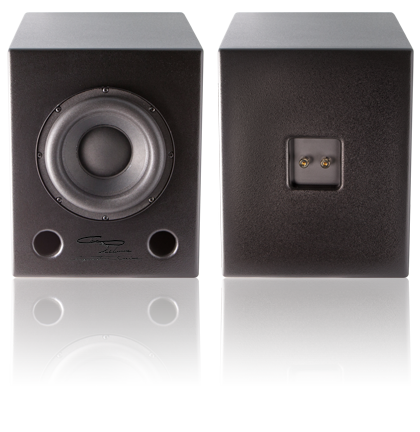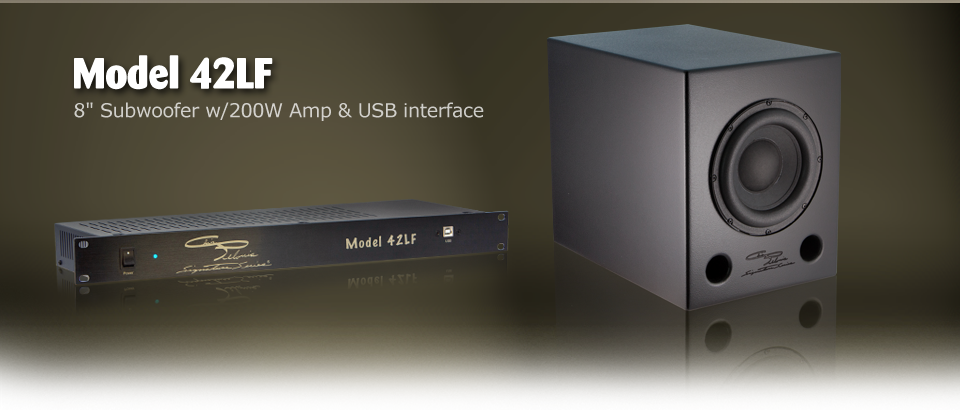
The Model 42LF MKII couldn’t be easier to set up. Just feed its electronics module with the same full range stereo signal as the Model 42 system, run a single speaker cable to the bass enclosure, and the low end of your system will extend flawlessly down, without any issues with the proper volume or crossover settings.
Placement and the characteristics of physical space itself can still be issues, of course. For those who want to be able to fine-tune the system to their individual environments, free software that allows extremely precise editing of EQ, volume and delay is provided. Connected from any computer via the USB port on the front panel of the electronics module, CP Control software allows complete control over every aspect of the unit’s performance, and any changes can be stored in the module after editing.
Dimensions: 15.5”H X 17”D X 11.5”W

The Model 42’s coaxial drivers gradually lose energy around 65 Hz, while the 42LF’s bass enclosure begins to gain energy around 85Hz. Click image above to view SPL vs Frequency graph.
We did not leave out the 42LF. Following the lead of the 4288, we replaced the original single spider woofer with a dual spider unit for improved excursion control and linearity. Along with the spider upgrade we improved the voice coil, effectively tripling the power handling power capability of the woofer. It also has the same 3.9dB added to the front end input.
There is no need to hide the 42LF because it’s one of the best looking sub-woofers you have ever seen. Inspired by the 4288, we have finished 42LF MK II with beautiful black Duratex paint.
The Pelonis Model 42LF MKII Low Frequency Extension System is not referred to as a subwoofer because it does not work the same as a conventional subwoofer.
Most subwoofers intended for professional audio applications are designed to be hard low pass shelved at a certain frequency (typically around 80 Hz), and then run with a pair of satellites usually cut off with a hard high pass shelf at the same frequency. This transfer of energy is inefficient, and can lead to problems depending on the settings (and construction!) of the sub and satellites. Many are equipped with inexpensive, inaccurate volume and crossover controls, and frequently are only fed with a mono and/or dedicated LFE signal. They cannot be switched on and off without changing the point at which the satellites are shelved.
The Model 42LF MKII is intended solely to integrate perfectly with the Model 42 studio monitoring system. This is accomplished by feeding both systems with a full range stereo signal, ensuring precise reproduction. The compact, full range Model 42’s coaxial drivers gradually loses energy around 65 Hz, while the 42LF’s bass enclosure begins to gain energy around 85Hz. This overlap between 65 and 85 Hz allows the units to transfer energy seamlessly, providing the most natural and accurate low-end extension of any professional playback system.
Another benefit of this method of operation is that the Model 42LF MKII can be switched on and off at any time, without disturbing the frequency response or playback capabilities of the Model 42 system.
Also, most subwoofers use off the shelf drivers and electronics. The Model 42’s 8” woofer, 200W amp and ported enclosure were all built to meet world-renowned acoustic designer Chris Pelonis’ exacting specifications.

©2012 Chris Pelonis Signature Series


